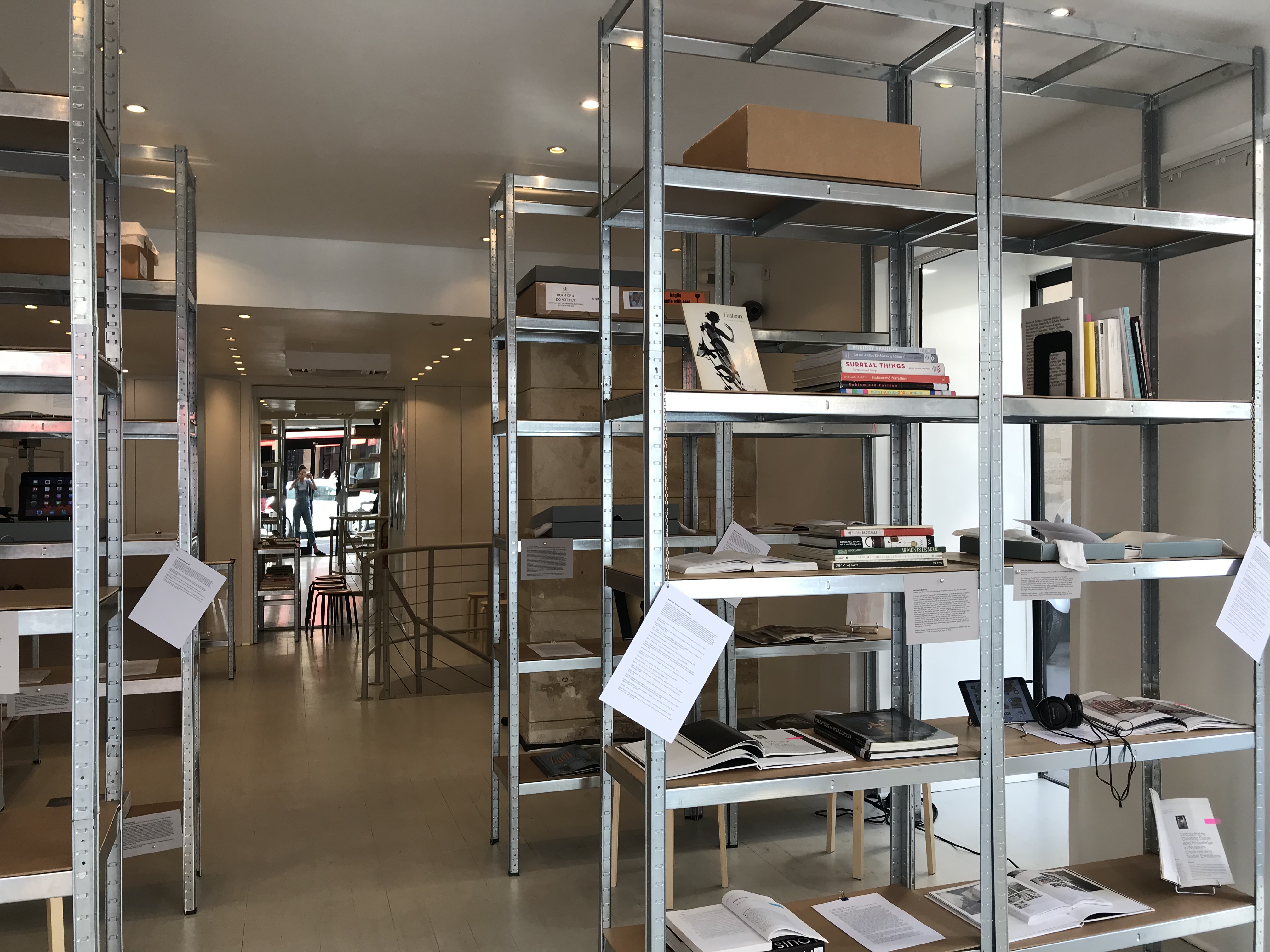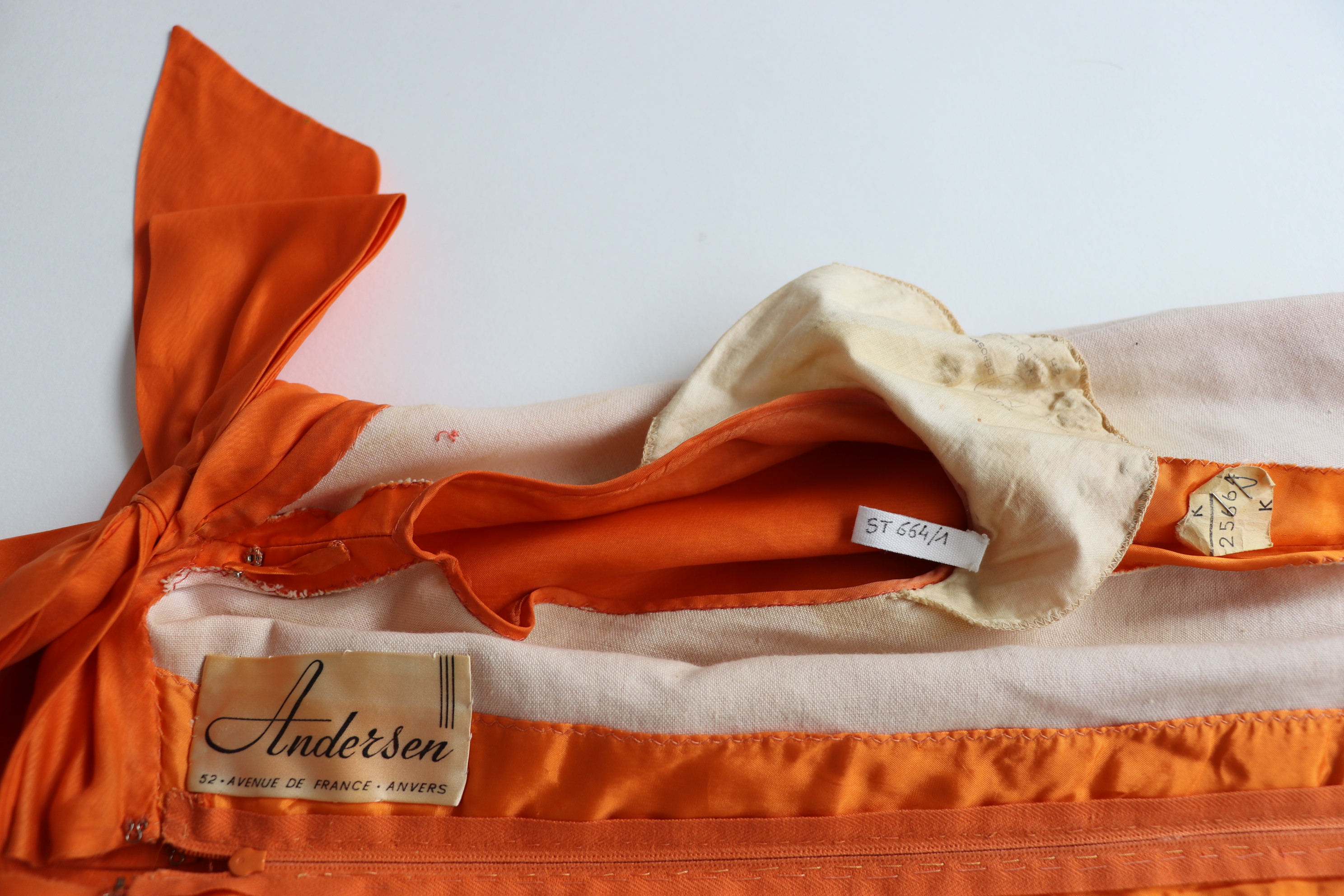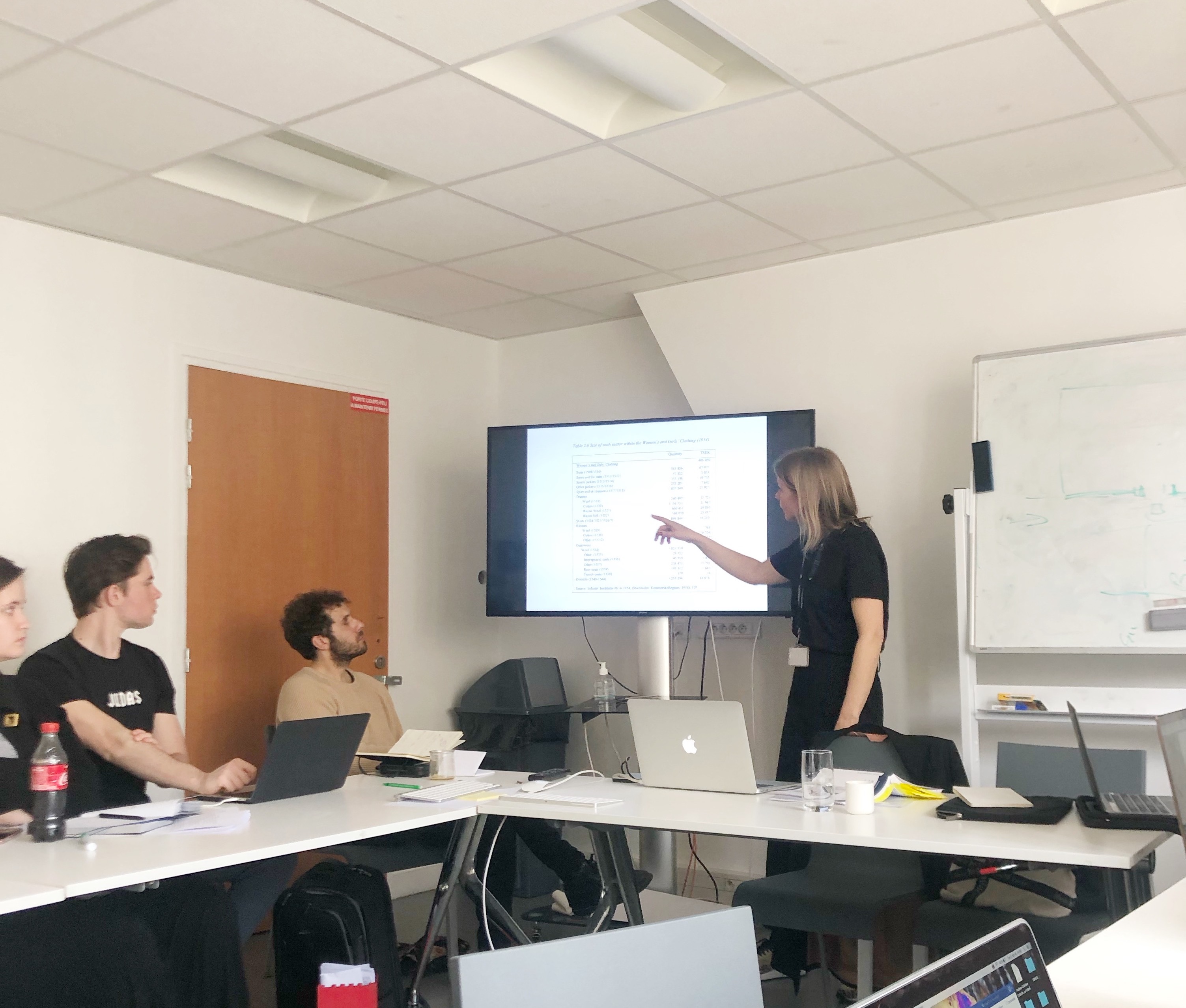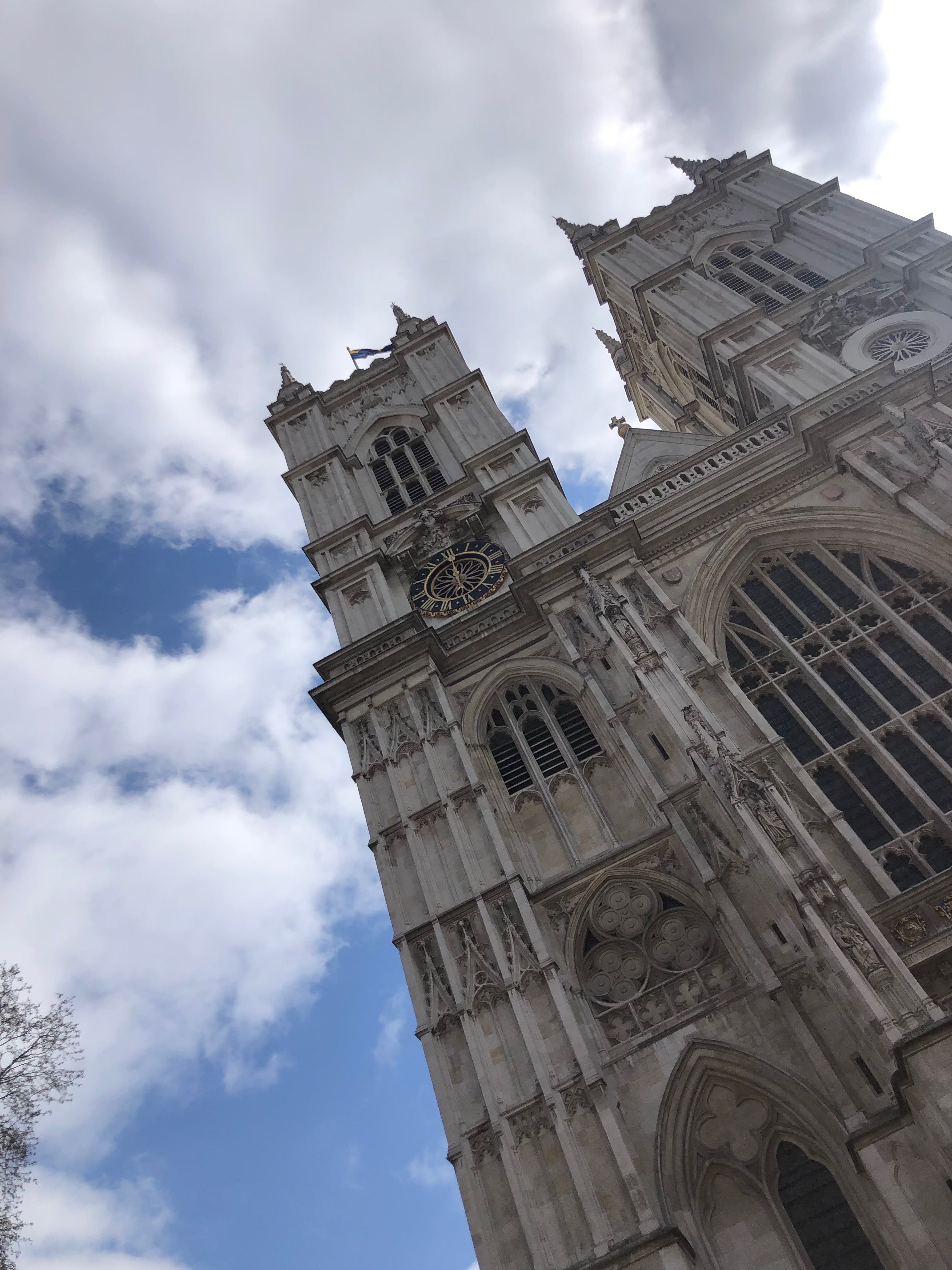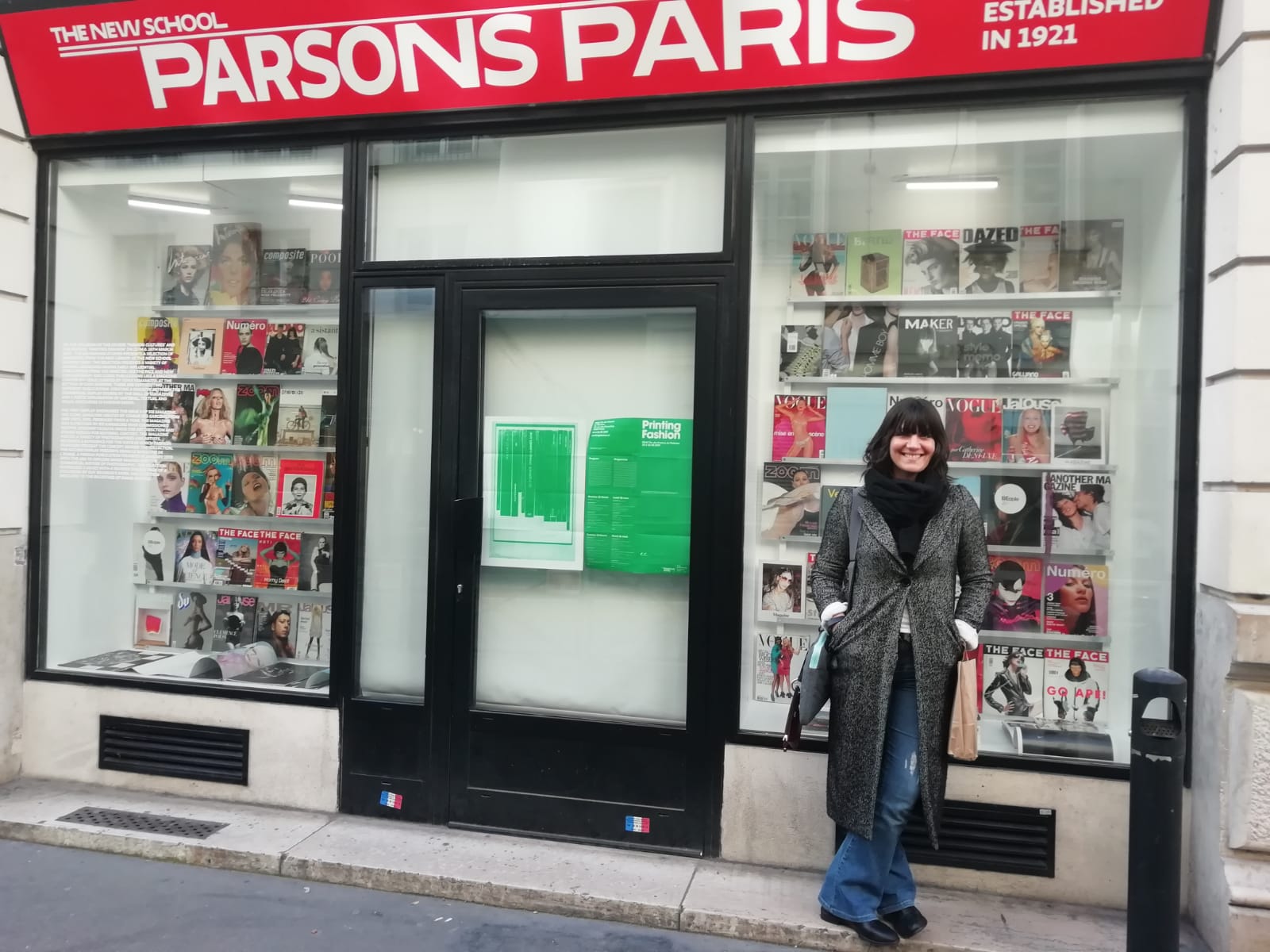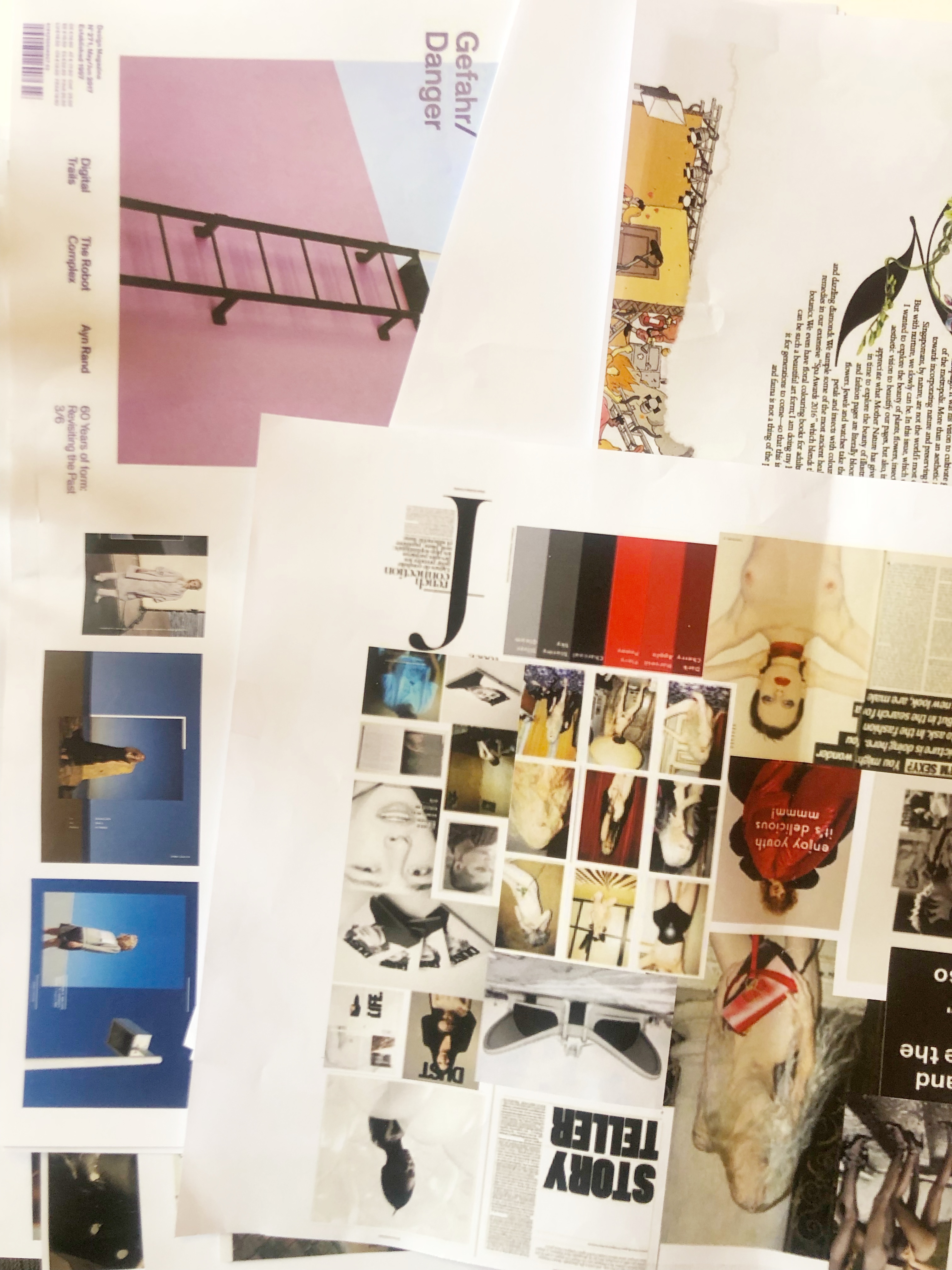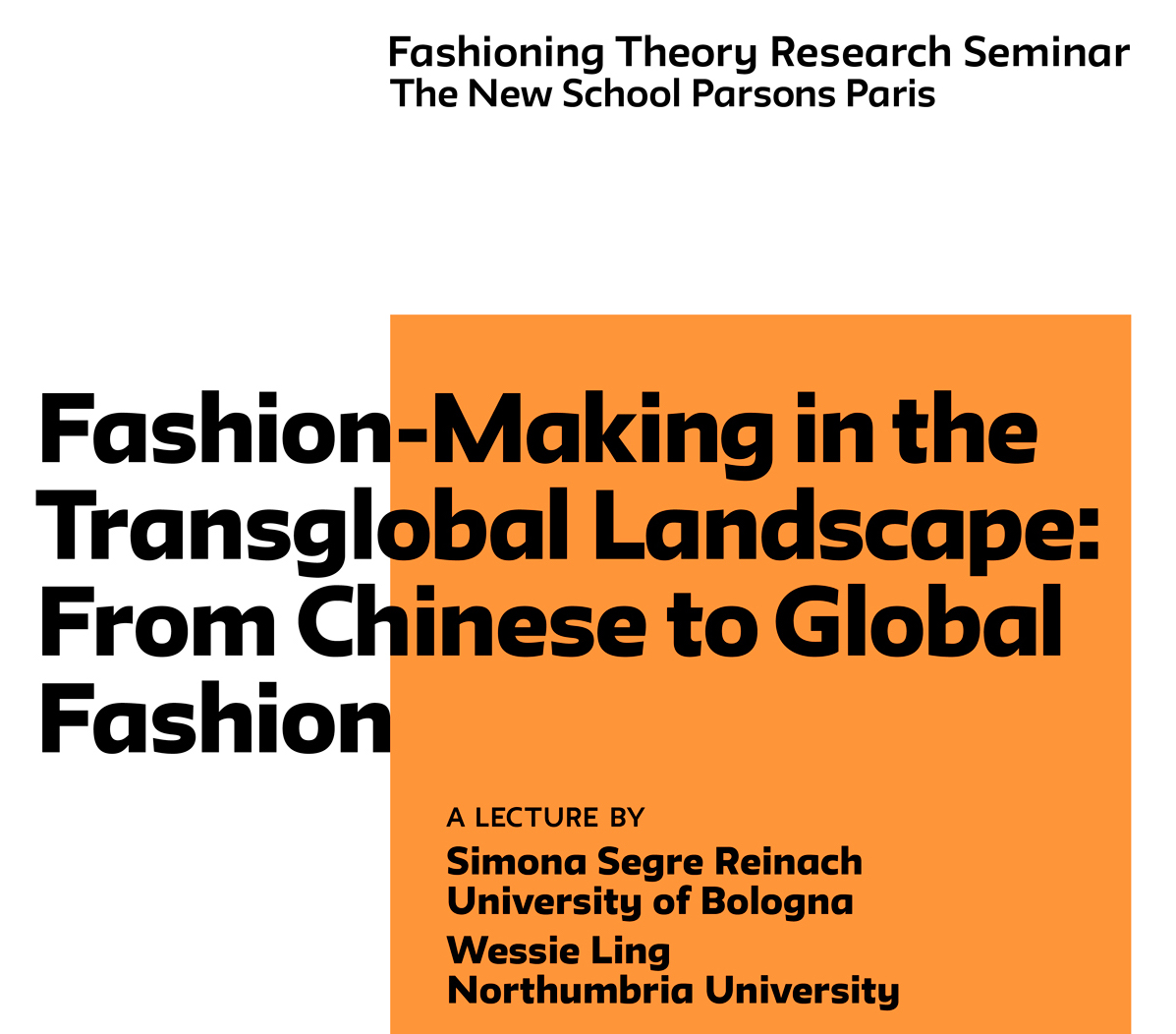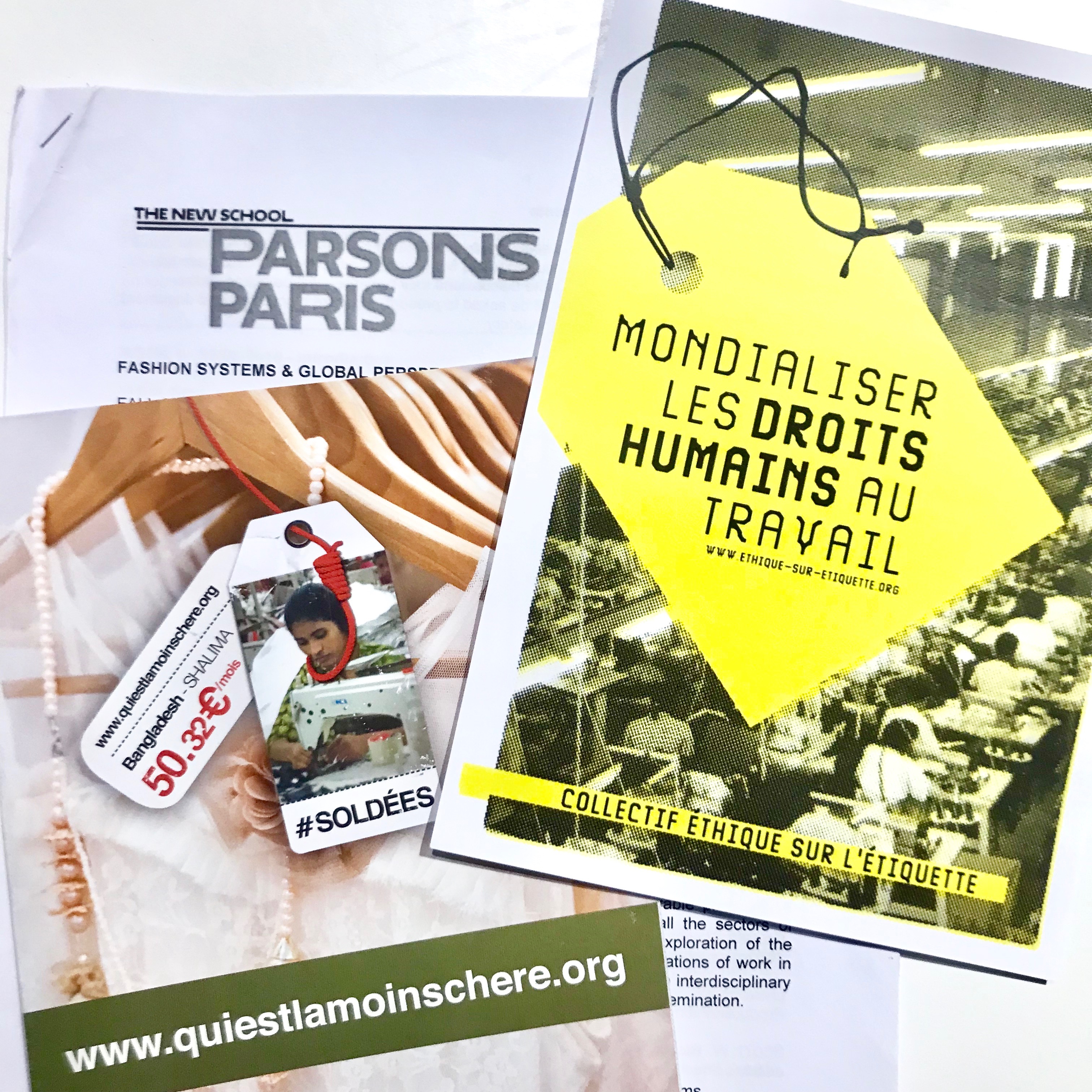A study collection is a collection of garments that is supposed to be primarily used for teaching purposes. This means that the garments can be consulted, touched, and manipulated. Some of the primary ways that the study collection is used is by designers for inspiration, students for pedagogical purposes, and training conservators in treatments. Parsons got the chance to go to MoMu to learn about the study collection from the museum staff, consult items from the collection, and ultimately loan 11 pieces that were then used in the exhibition: Objéts d’Étude: The Politics of the Study Collection in the Fashion Museum.
The exhibition was ultimately divided into 4 different parts. The first part was titled ‘A Genealogy of the Study Collection,’ and its primary purpose was to try to define what a study collection is within the broader museological context. The study collection is a relatively new addition to MoMu, and very few other museums have them–Parsons in New York and FIT also in New York being the other two most prominent (notably, all three of these institutions are tied to schools). In an attempt to define what a study collection is, section exhibited interviews with MoMu staff, curators and experts from other institutions and museums, and a number of exhibition catalogs and books to contextualize where the study collection sits within the museum.
The second section was titled ‘Mapping MoMu Study Collection.’ Working off of the definition produced by the first section, this part aimed to address the history of the study collection within MoMu specifically. Starting with the idea of circulation of the garments on display; originating with FIT’s study collection, moving to the University of Antwerp, and eventually ending up at MoMu, this section also addressed the importance of private donation in building the study collection, manners of use, how the study collection fits within the context of MoMu’s vision and mission as well as Antwerp as a burgeoning fashion city, and final what the future may hold for the study collection at MoMu.
The third part was titled ‘Autopsy of Value,’ and addressed the inherent differences between the value of the main collection and the value of the study collection. Featuring one of the study collection’s seminal pieces, a deconstructed ‘Burberrys’ coat, this section dissected how destroyed or damaged garments within the study collection assume new value when they become teaching tools, rather than garments meant to be on display. Additionally, this section featured correspondence between Parsons and MoMu, the insurance values of the garments on loan, and receipts for the cost of exhibiting the traditionally ‘unexhibitable’ garments from the study collection.
The final part was titled, ‘(Im)perfections,’ and was a sort of continuation of ‘Autopsy of Value.’ Featuring four garments, and a video, this section addressed specific study collection garments’ imperfections. Exploring more complex issues such as time, and materiality; this section invited the visitor to think about the story that our clothing can tell. Additionally, it created a conversation around the inherent need for perfection within the museum contrasted with the imperfections of the garments within the study collection.
The curation and installation of this exhibition was arduous and exhausting at times, but the result is something of which we can all be very proud. To see more images of the garments and exhibition, head to @parsonsparis and @parsonsparis.fashionstudies!
Words: Katie Wilkes
Photos: Katie Wilkes
SaveSave




